It seems everyone has become obsessed with where their food comes from. Eating at certain restaurants is seen as “better” than others. But while some chain restaurants aren’t held with the same esteem as their locally rooted counterparts, there are actually many chain restaurants across the U.S. that support farmers, FFA organizations, and their rural communities.
We love when restaurants use their wide reach to support those who produce food, whether that’s through event or organizational support, or simply using social media or other creative means to voice their support for farmers. While all restaurant depend on farmers and ranchers to produce what gets served inside their locations, not every business takes a positive approach to the farming sector (much like what has long happened out of Chipotle or even the 2020 Burger King commercial debacle).
It may make you wonder what restaurant chains do support farmers. Wonder no more. Here is a list of six guilt-free, farmer-friendly chain restaurants that do right by those of us in rural areas:
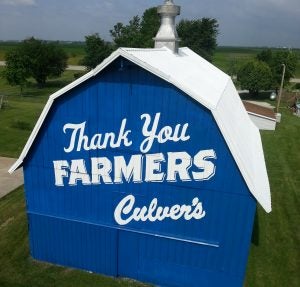
1. Culver’s
Headquarters: Prairie du Sac, Wisconsin
Founded: 1984
Website: www.culvers.com
Can you say cheese curds? Craig and Lea Culver, with Craig’s parents, George and Ruth, opened the first Culver’s in Sauk City, Wisconsin, in 1984 and began serving ButterBurgers and Frozen Custard. In 1990, the first franchise location opened in Baraboo, Wisconsin. Today, Culver’s can be found in 26 states primarily across the Midwest. But the chain has locations in Arizona, Florida, Colorado, Nevada, the Carolinas and more.
There isn’t a chain restaurant out there that does as much for rural communities as Culver’s does, and it would be a disservice not to kick off this list with them. Culver’s is known for its support of the FFA. As a Silver Corporate Partner of the National FFA Organization, the chain donates more than $250,000 annually to fund events, awards, scholarships and more. Culver’s and the Culver’s Foundation have donated more than 700 blue jackets, more than $3.5 million to agricultural education, and have awarded more than 3,000 scholarships.
The company has also put on essay contests for FFA members and have several avenues for raising money for FFA, 4-H, or other community agricultural organization. For example, restaurants across the nation will have share nights, where a percentage of sales will go back to a featured ag group. It’s a way to help the farming community, but also to help put the spotlight on the folks who grow our food.
In the past five years, the company has raised more than $1.7 million, and the majority of those dollars stay local in the communities. Couple all of this with efforts like their Thank You Farmers campaign and the Scoops of Thanks Day, and you can be sure that Culver’s has your back.
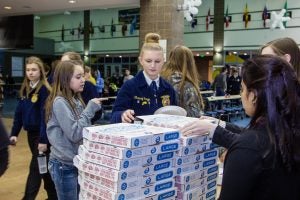
2. Domino’s
Headquarters: Ann Arbor, Michigan
Founded: 1960
Website: www.dominos.com
Pizza is arguably the best food group — carbs, cheese, meat, tomato sauce, and did I mention cheese? Domino’s started with a store in Ypsilanti, Michigan, in 1960. In 1983 Domino’s went global opening locations in Canada and Australia. Today, the chain is the largest pizza company in the world, reaching more than 90 international markets.
The chain is a partner of the Dairy Management Inc. (DMI), supporting various initiatives and farmers. Even the pizza boxes feature pro-dairy and pro-agriculture marketing. In 2020, Domino’s partnered with DMI to provide a special pizza promotion for veterans and the Wounded Warrior Project. Moreover, the company is a Five Star sponsor of the National FFA Association, donating more than $100,000 annually to support the organization.
And the brand isn’t shy about voicing its support for farmers. For instance in 2019, a Domino’s spokesperson said, “Domino’s wouldn’t exist without dairy, tomato and wheat farmers across the U.S. Farmers work seven days a week, just like Domino’s stores and team members — all working hard to bring delicious food to customers’ tables every day.”
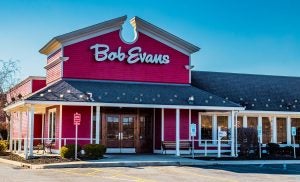
3. Bob Evans
Headquarters: New Albany, Ohio
Founded: 1948
Website: www.bobevans.com
This one hits particularly close to home for many Midwesterners — my Ohio-native bestie is obsessed with Bob Evans breakfast. The restaurateur opened his four-stool, six-table restaurant soon after World War II. The Rio Grande, Ohio, staple is now in 18 states and is known as “America’s Farm Fresh.” The chain prides itself on partnering with farmers just like its founder.
Bob Evans has a partnership with the National FFA Organization. The chain hosts “Egg Crack, Give Back” coinciding with “National Give FFA Day” during National FFA Week. On February 24, 2022, for every Farmer’s Choice Breakfast sold, the chain made a $1 donation to the FFA for Supervised Agricultural Experience grants. This partnership garners Bob Evans as a Two Star sponsor of the National FFA Organization. Talk about getting biscuits with your gravy.
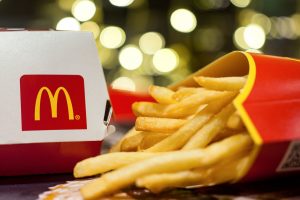
4. McDonald’s
Headquarters: Chicago, Illinois
Founded: 1940
Website: www.mcdonalds.com
I’m lovin’ it. Trust me, farmers will, too. McDonald’s, one of the world’s leading food service brands, started as a small burger joint in San Bernardino, California, run by brothers Dick and Mack McDonald. In 1954, Ray Kroc visited the restaurant for the first time. In 1955, Kroc became the brother’s franchise partner forming McDonald’s System Inc. now known as the McDonald’s Corp. Today, the chain consists of more than 36,000 locations in over 100 countries.
In 2021, McDonald’s pledged $5 million to AgMission — a collaboration to reduce greenhouse gas emissions in agriculture. The chain is a Diamond Level Title Sponsor of the Oklahoma FFA Association donating more than $25,000. Moreover, McDonald’s is a Title Sponsor of the Oklahoma Youth Expo, promoting the growth of Oklahoma youth in the junior livestock industry through scholarships and other opportunities.
In 2021, after Burger King’s contentious livestock ad, McDonald’s responded in a way that had everyone celebrating through its ad titled We’re proud to support the future of Canadian beef ranching. In it, the discussion focused on the sustainable future of livestock farming and its beef products. Estimates vary, but McDonald’s sells at least 6.5 million burgers daily around the world, so the impact of that process and the microscope that society puts on the industry is a notable one.
“It’s the same lands, the same grass, and the same soil, and we continue to farm it today,” one of the young ranchers says in that iconic ad.
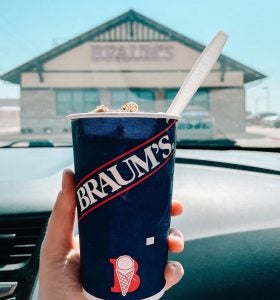
5. Braum’s Ice Cream & Dairy Stores
Headquarters: Oklahoma City, Oklahoma
Founded: 1968
Website: www.braums.com
In a certain wonderful part of the country, we go to Braum’s for ice cream — if you know, you know. If you don’t, I’m going to tell you.
In 1933, Bill Braum’s father purchased a small Kansas butter processing plant, which eventually grew to be “Peter Pan Ice Cream Stores.” In 1968, Bill and his wife, Mary, opened the first Braum’s store in Oklahoma. Braum’s is found in five states with the Tuttle, Oklahoma, dairy farm and processing plant at the center.
The family-owned business runs one of the largest dairies in the world, milking a self-reported thousands of cows per hour. The company is the only major ice cream manufacturer in the country that milks 100 percent of its own cows. The chain says it takes less than 36 hours from cow to store. Each store (there are more than 300 of them) is located within 330 miles of the dairy and processing facility with deliveries 363 days a year. Additionally, Braum’s has often supported community schools and agricultural education programs by hosting regular tours of its dairy and processing facilities — exposing students to how dairy farms operate.
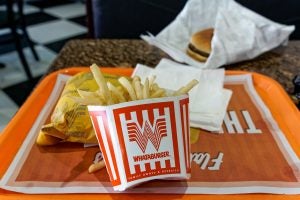
6. Whataburger
Headquarters: San Antonio, Texas
Founded: 1950
Website: www.whataburger.com
Everything is bigger in Texas, including the burgers. The 2 a.m., Whataburger drive thru line in college towns can run around the block. I once waited over an hour for my No. 2, add cheese,
sub mayo with a Powerade in Stillwater, Oklahoma, and would do it again.
In 1950, Harmon Dobson took the word “bigger” literally, choosing to serve burgers you had to hold with two hands at his Corpus Christi, Texas, drive-in. The story goes that customers would exclaim, “What a burger,” after every bite giving the restaurant its unique name. The chain prides itself on serving made-to-order food 24/7, 365 days a year in more than 890 restaurants across 14 states.
If it’s one thing Texas is known for, it’s agriculture, especially when it comes to the support of the junior livestock and rodeo industries. The iconic shows are, you guessed it, sponsored by the
classic orange and white stripes of Whataburger. The chain is a title sponsor of the Houston Livestock Show and Rodeo, a Gold Level sponsor of the San Antonio Stock Show and Rodeo, and hosts the Whataburger Kid’s Zone at the Fort Worth Stock Show and Rodeo. Plus, Whataburger has fundraising opportunities which FFA chapters, especially in Texas, take advantage of.
Braeden Coon holds dual degrees from Oklahoma State University in agricultural communications and animal science and has a master’s in journalism from Northwestern University.


